Cytoskeletal domains in the activated platelet
- PMID: 7728868
- PMCID: PMC3626093
- DOI: 10.1002/cm.970300107
Cytoskeletal domains in the activated platelet
Abstract
Platelets circulate in the blood as discoid cells which, when activated, change shape by polymerizing actin into various structures, such as filopodia and stress fibers. In order to understand this process, it is necessary to determine how many other proteins are involved. As a first step in defining the full complement of actin-binding proteins in platelets, filamentous (F)-actin affinity chromatography was used. This approach identified > 30 different proteins from ADP-activated human blood platelets which represented 4% of soluble protein. Although a number of these proteins are previously identified platelet actin-binding proteins, many others appeared to be novel. Fourteen different polyclonal antibodies were raised against these apparently novel proteins and used to sort them into nine categories based on their molecular weights and on their location in the sarcomere of striated muscle, in fibroblasts and in spreading platelets. Ninety-three percent of these proteins (13 of 14 proteins tested) were found to be associated with actin-rich structures in vivo. Four distinct actin filament structures were found to form during the initial 15 min of activation on glass: filopodia, lamellipodia, a contractile ring encircling degranulating granules, and thick bundles of filaments resembling stress fibers. Actin-binding proteins not localized in the discoid cell became highly concentrated in one or another of these actin-based structures during spreading, such that each structure contains a different complement of proteins. These results present crucial information about the complexity of the platelet cytoskeleton, demonstrating that four different actin-based structures form during the first 15 min of surface activation, and that there remain many as yet uncharacterized proteins awaiting further investigation that are differentially involved in this process.
Figures
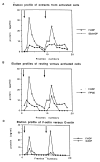
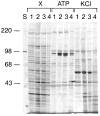
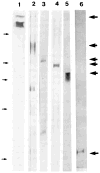

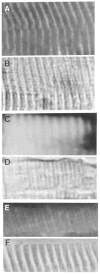


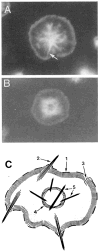

References
-
- Fox JEB, Philips DR. Polymerization and organization of actin filaments within platelets. Sem Hematol. 1983;20:243–260. - PubMed
-
- Fox JE. Regulation of platelet function by the cytoskeleton. Adv Exp Med Biol. 1993;344:175–185. - PubMed
-
- O’Halloran T, Beckerle MC, Burridge K. Identification of talin as a major cytoplasmic protein implicated in platelet activation. Nature (Lond) 1985;317:449–451. - PubMed
-
- Nachmias VT, Golla R. Vinculin in relation to stress fibers in spread platelets. Cell Motil Cytoskel. 1991;20:190–202. - PubMed
Publication types
MeSH terms
Substances
Grants and funding
LinkOut - more resources
Full Text Sources
Research Materials

